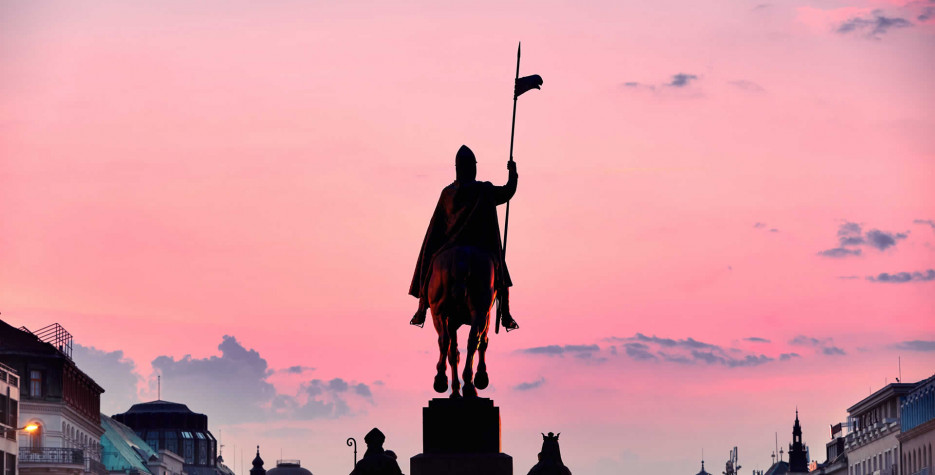When is St. Wenceslas Day?
This holiday is always celebrated on September 28th.
It is the feast day of St. Wenceslas, the patron saint of Bohemia, and commemorates his death in 935.
Also known as 'Czech Statehood Day', it is a national holiday in the Czech Republic and has been a public holiday since 2000.
History of St. Wenceslas Day
This is the same Good King Wenceslas, who is mentioned in a popular Christmas Carol written in 1853 about St. Stephen's Day.
Wenceslas was born near Prague in 907 and was the son of the Duke of Bohemia. His father died in 921 and Wenceslas ruled from 922 when he was 15 years old. Raised as a Christian, primarily by his grandmother, Ludmila who had been baptised by the Greek missionaries Cyril and Methodius who brought Christianity to the region.
The reign of Wenceslas is marked by his support of the church, his aim to unify Bohemia and making peace with Germany.
These policies created enemies within his court and even his family. His brother Boleslav was one of those who plotted against him. Boleslav invited Wenceslas to a church consecration. On the morning of September 28th 935 (or 929, according to some historians), on his way to the mass, Wenceslas was attacked by Boleslav and was killed by supporters of his brother.
Having suffered a martyr's death, Wenceslas was immediately considered a saint. This lead to a cult of veneration with several biographies being written and miracles attributed to him. He was even posthumously made a king by the Holy Roman Emperor, Otto I which is why the carol refers to him as a king when in life he was a duke.
After Wenceslas's death, Boleslav assumed power and reigned for almost fifty years. Later in life, Boleslav clearly felt remorse or guilt for his actions and in 972 he had the first church devoted to Saint Wenceslas built in Prague.
Although the feast day of the Czech patron saint has long been an important day for Czech Roman Catholics, St. Wenceslas Day only became a national holiday in the year 2000 - "the Day of Czech Statehood" - upon the initiative of the Christian Democratic Party.
As a footnote, and a warning against fratricide, it was Boleslav who founded the independent Czech state, yet his martyred brother has the Day of Czech Statehood celebrated on his feast day.
On this day, the skull of St. Wenceslas is brought from Prague by the Arch Bishop of Prague and paraded through the town of his murder, Stará Boleslav.
How is St. Wenceslas Day Celebrated?
In recent years, Wenceslas’ feast day has been associated with a popular market and beer celebrations.
The holiday also sees store closures throughout the country, including hypermarkets and supermarkets.
Small shops with an area less than 200 square meters can remain open, as can those in transit areas such as airports and train stations. Shopping centers will be open with adjusted hours, as shops over 200 square meters will be closed for the day (many food courts remain open with adjusted hours).
Wenceslas Square
Wenceslas Square, the most famous and important square in Prague, was known as the Horse Market until 1848, and was renamed as part of the National Awakening movement, which would eventually lead to the creation of Czechoslovakia in 1918.
The statue of St Wenceslas that you see today is actually the second one. The first was a small sandstone one by sculptor Johann-Georg Bendl, dating to 1680. It stood in the center of the square until 1879 and then was moved to Vyšehrad, where it still stands.
The current statue is the work of Josef Václav Myslbek, and it took decades to make, finally finished in 1924. It also features four outher Czech saints surrounding the base: Ludmila, Agnes of Bohemia (Anežka Česká), Prokop, and Adalbert (Vojtěch).


